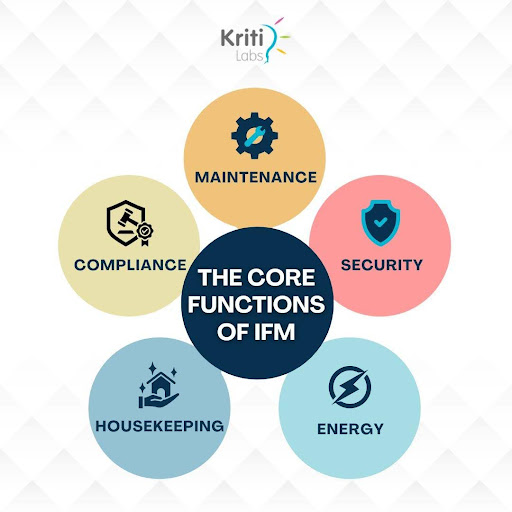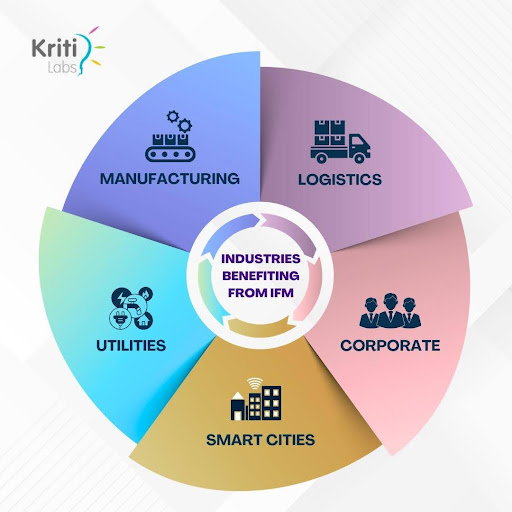How Does Integrated Facility Management Work for Businesses?
Facilities are the backbone of any business, from office complexes and logistics hubs to manufacturing plants and urban infrastructure. As enterprises scale, so do the complexities of maintaining these spaces. Traditional facility management often works in silos, with separate teams and vendors managing maintenance, security, utilities, and compliance. This creates inefficiencies, higher costs, and gaps in safety.
This is where integrated facility management (IFM) comes into play. Instead of fragmented oversight, IFM unifies all services under one coordinated framework, supported by technology, data, and automation. Businesses can streamline operations, improve efficiency, and create safer, more reliable environments.
Integrated facility management (IFM) is the practice of consolidating all facility-related services
into a single, unified system. Unlike traditional facility management, which often relies on multiple
vendors and fragmented oversight, IFM centralises control through one provider or platform.
In simple terms:
At its core, IFM works by integrating people, processes, and technology into a single framework.
Example: In a logistics hub, IFM unifies lighting, security, and access systems.
When an intrusion is detected, lights increase, doors lock, and alerts are sent instantly.
Smart sensors measure temperature, vibration, and performance to detect anomalies early and
schedule maintenance before breakdowns occur.
AI-enabled cameras monitor for unauthorised entry, risky behaviour, and safety violations,
improving both safety and compliance.
IoT systems monitor lighting, water, and HVAC usage, while AI optimises consumption based on
occupancy and patterns.
Unified dashboards consolidate data from sensors and analytics, enabling proactive performance
optimisation.
In short, AI and IoT transform IFM from reactive to predictive and proactive.
IFM ensures worker safety and machinery uptime through IoT sensors, AI monitoring, and
energy optimisation.
IFM enhances security with integrated CCTV, tracks cargo movement with IoT, and optimises
energy usage across lighting and HVAC.
Automated HVAC, real-time dashboards, and AI-based access systems improve occupant experience
and compliance.
IFM helps manage public infrastructure with predictive maintenance, crowd monitoring, and
waste management.
IFM will become a strategic driver of resilience and organisational growth.
Integrated facility management is essential for efficient, safe, and sustainable operations.
From manufacturing to smart cities, IFM simplifies complexity with unified, AI- and IoT-driven systems.
With advanced technologies, Kritilabs empowers businesses to embrace the future of facility
management and turn challenges into opportunities.
IFM centralises all facility services—maintenance, security, energy—into a single platform powered
by AI, IoT, and automation.
Traditional FM uses multiple vendors and manual processes. IFM unifies services, digitises operations,
and enables proactive decision-making.
Maintenance, security, energy management, housekeeping, and compliance reporting under one system.
IoT sensors and AI enable predictive maintenance, smart energy use, and real-time security monitoring.
Manufacturing, logistics, corporate offices, smart cities, and public infrastructure.
What is Integrated Facility Management?
What is the Difference Between Facility Management and Integrated Facility Management?
ASPECT
Facility Management
Integrated Facility Management
Vendors
Multiple Vendors
Single Provider/Platform
Processes
Manual & Fragmented
Automated & Unified
Visibility
Limited, siloed reporting
Centralised dashboards with real-time insights
Efficiency
Higher chances of duplication and delays
Streamlined operations with better coordination
Decision-making
Reactive, issue-based
Proactive, data-driven
Flexibility
Less scalable and harder to adapt
Highly scalable across sites and services
Technology Use
Isolated systems for each service
Integrated platforms for monitoring and reporting
Traditional FM = multiple vendors, manual processes, siloed communication.
Integrated FM = unified vendor, digital platforms, centralised dashboards, automation, and data-driven insights.
Core Functions of Integrated Facility Management

How Integrated Facility Management Works for Businesses
The Role of AI and IoT in Integrated Facility Management
IoT Sensors for Predictive Maintenance
AI Video Analytics for Security
Smart Energy Management
Data-Driven Decision Making
Industry Use Cases of Integrated Facility Management
1. Manufacturing
2. Logistics and Warehousing
3. Corporate and Commercial Real Estate
4. Smart Cities and Government Facilities

Benefits of Integrated Facility Management
Kritilabs’ Role in Integrated Facility Management
The Future of Integrated Facility Management
Conclusion
FAQs
1. What is Integrated Facility Management (IFM)?
2. How is IFM different from traditional facility management?
3. What are the key functions of IFM?
4. How do AI and IoT enhance IFM?
5. Which industries benefit from IFM?

